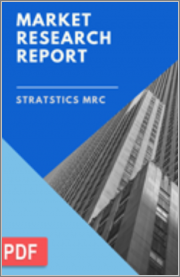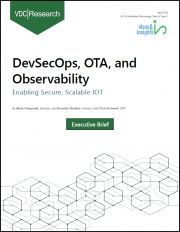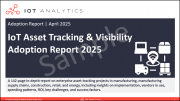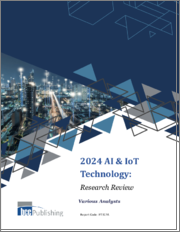
|
시장보고서
상품코드
1383303
IoT 시장 예측(-2030년) : 조직 규모별, 기술별, 최종사용자별, 지역별 세계 분석IoT Market Forecasts to 2030 - Global Analysis By Organization Size, Technology, End User and by Geography |
||||||
Stratistics MRC에 따르면 세계 IoT 시장은 2023년 3,825억 달러, 2030년에는 1조 3,079억 달러에 달할 것으로 예상됩니다.
사물인터넷(IoT)은 인터넷 프로토콜(IP)을 통해 서로 통신할 수 있는 물리적 및 디지털 사물 네트워크를 말합니다. 물리적 물체에는 센서, 소프트웨어 및 네트워크 기능이 있어 인터넷을 통해 데이터를 수집하고 교환할 수 있습니다. 그 적용 범위는 간단한 가정용품부터 고급 산업 응용에 이르기까지 다양합니다. 정보화 사회의 세계 인프라 역할을 하며, 현재 개발 중인 통신 기술에 기반한 확장된 서비스를 통해 사물의 상호 연결을 가능하게 합니다.
국제로봇연맹에 따르면 협동로봇 시장 규모는 2025년까지 123억 달러에 달할 것으로 예상됩니다.
IoT의 발전으로 인한 연동 기기 증가
인터넷 연결과 연동된 디바이스를 통해 소매점에서 소비자 행동에 대한 적절한 데이터를 수집하고, 실시간 마케팅 조사, 센서 기반 의사결정 분석, 고도의 자율 시스템에서 즉각적인 제어 응답 등 다양한 선택이 가능해졌습니다. 사물인터넷(IoT)을 통해 기업과 정부는 스마트 시티, 스마트 교통, 스마트 공공사업 등 모든 스마트 잠재력에서 실시간으로 위치 데이터에 접근할 수 있습니다. 또한, 고속 네트워크에 대한 접근이 가능해지면서 에너지, 의료, 교통 및 기타 공공 서비스 분야를 포함한 다양한 산업에서 인프라를 보다 효율적으로 모니터링하고 관리할 수 있게 되었습니다.
IoT에 대한 인식 부족과 보안 문제 증가
스마트 환경 구축의 주요 장애물 중 하나는 일반 대중의 인식 부족입니다. 스마트 시티 솔루션을 개발하려는 정부도 많은 지역 주민들이 스마트 시티 이니셔티브에 대해 알지 못한다는 사실로 인해 목표를 달성하지 못하고 있으며, IoT 생태계의 많은 플랫폼, 시스템 및 프로토콜은 확립된 통신 표준이나 호환성이 없습니다. 없습니다. 이러한 파편화로 인해 다양한 IoT 구성요소가 서로 협력하고 쉽게 통합하기 어렵고, 확장성이 제한되어 단일 IoT 인프라의 개발을 방해하고 있습니다. 연결된 장치와 데이터 전송이 증가함에 따라 보안 문제와 프라이버시 위험이 만연하게 됩니다.
저렴하고 저전력 소모의 센서 기술 활용 가능성
가장 중요한 IoT 기기 구성요소는 센서다. 방향, 움직임, 빛, 소리, 습도, 온도뿐만 아니라 혈압, 심박수와 같은 생체 정보도 센서를 통해 측정할 수 있습니다. 저전력 소비 센서는 산업 분야와 다양한 응용 분야에서 IoT를 쉽게 실행할 수 있도록 도와줍니다. 따라서 센서 기술의 혁신이 가속화될수록 IoT의 가능성은 더욱 커질 것으로 예상됩니다.
저개발국에서의 기술혁신과 전문지식 부족
많은 국가에서 통신 인프라, 네트워크 인프라 등 핵심 기술이 부족하고, 제한된 자금, 낮은 문맹률 등 다양한 문제로 인해 스마트 프로젝트를 신속하게 실행할 수 없습니다. 또한 IoT의 복잡성, 보안 결함 및 통합의 어려움으로 인해 IoT 산업의 효과적인 구현은 전문 지식의 부족으로 인해 어려움을 겪고 있습니다. 그 결과 개발도상국의 자산과 인프라 부족, 고객의 무지와 전문 지식 부족이 사물인터넷 분야의 성장을 저해할 것으로 예상됩니다. 따라서 급속한 기술 발전과 소비자 기대치의 변화는 지속적인 혁신을 필요로 하며, 이는 경쟁 불리, 가격 상승, 고객 불만족으로 이어질 것입니다.
COVID-19의 영향:
COVID-19는 사회와 비지니스에 전례 없는 결과를 가져왔습니다. 전 세계 의료 전문가, 정부, 기업 경영자들은 생명을 보호하는 데 더 많은 관심을 기울이고 있습니다. 전염병 기간 동안 다양한 공급과 수요 요인으로 인해 제조 수준이 급격히 떨어지고 사업이 중단되었습니다. 주요 대기업들도 예전처럼 연구와 IoT 개발에 투자하지 않고 있으며, 제조업체와 산업계는 COVID-19의 영향으로 큰 어려움을 겪고 있습니다.
예측 기간 동안 소프트웨어 솔루션 부문이 가장 큰 비중을 차지할 것으로 전망
소프트웨어 솔루션 분야는 업무 효율성을 높이고, 고객 만족도를 높이며, 수익을 창출할 수 있는 새로운 전망을 창출하는 기업용 애플리케이션으로 인해 유리한 성장세를 보일 것으로 예상됩니다. 인터넷에 연결된 IoT 기기는 서로 쉽게 데이터를 통신하고, 애플리케이션을 실행하고, 사용자에게 신뢰할 수 있는 데이터 결정을 내릴 수 있도록 연동됩니다. 소프트웨어 솔루션이 제공하는 광범위한 기술은 기업이 목표를 달성하고 중요한 경쟁력을 유지하는 데 도움이 됩니다. 중요한 인프라, 산업 및 기타 시스템에서 다양한 작업을 자동화하기 위해 소프트웨어 솔루션의 인기가 높아지고 있습니다.
예측 기간 동안 농업 분야가 가장 높은 CAGR을 기록할 것으로 예상
농업 분야는 CAGR이 가장 크게 확대될 것으로 예상됩니다. 현장 기반 센서 및 장비에 대한 수요 증가, 스마트 농업, 스마트 온실, 스마트 농업, 정밀농업, 스마트 드론 등 많은 요인이 농업 산업의 주요 기술 응용 사례 중 하나입니다. 더 많은 정보에 기반한 의사결정을 내릴 수 있게 됨에 따라 수확량을 늘리면서 비용을 절감할 수 있게 되었습니다. 예를 들어, 스마트 농업은 실시간 농장 모니터링을 통해 전체 농업 시스템을 개선하여 농부들이 효율적으로 식량을 생산할 수 있도록 돕습니다.
가장 큰 점유율을 차지하는 지역:
예측 기간 동안 아시아태평양이 가장 큰 시장이 될 것으로 예상됩니다. 이 지역은 신기술 채택률이 높아 IT 산업에서 중요한 시장으로 부상하고 있습니다. 이 지역은 급속한 도시화를 겪고 있는 신흥국들에게 유용하며, 세계에서 가장 도시화율이 높은 지역으로 부상하고 있습니다. 전 세계 신흥국 대부분이 이 지역에 위치하고 있으며, 세계에서 가장 도시화가 활발한 지역입니다.
CAGR이 가장 높은 지역:
예측 기간 동안 북미 지역이 가장 높은 CAGR을 기록할 것으로 예상되는데, 이는 이 지역이 기술적으로 가장 발전된 지역이기 때문입니다. 미국과 캐나다는 신흥 경제 국가로 연구개발 프로젝트에 많은 투자를 할 수 있는 국가입니다. 커넥티드 디바이스 및 관련 네트워크 인프라의 활용, 하드웨어, 네트워크, 소프트웨어 공급업체 간의 협력 강화는 북미 지역의 IoT 시장 성장에 기여하는 주요 요인으로 꼽힙니다. 또한, 캐나다의 기업들은 IoT 기능을 도입하여 기업 생산과 시장 운영을 보다 효율적으로 개선하고 최적화하고 있습니다.
무료 맞춤형 서비스
이 보고서를 구독하는 고객은 다음과 같은 무료 맞춤형 옵션 중 하나를 사용할 수 있습니다:
- 회사 프로필
- 추가 시장 진입 기업의 종합적인 프로파일링(최대 3개사까지)
- 주요 기업 SWOT 분석(3개사까지)
- 지역 세분화
- 고객의 관심에 따른 주요 국가별 시장 추정 및 예측, CAGR(참고: 타당성 검토에 따른 것임)
- 경쟁사 벤치마킹
- 제품 포트폴리오, 지리적 입지, 전략적 제휴를 기반으로 한 주요 기업 벤치마킹
목차
제1장 주요 요약
제2장 서문
- 개요
- 이해관계자
- 조사 범위
- 조사 방법
- 데이터 마이닝
- 데이터 분석
- 데이터 검증
- 조사 접근법
- 조사 소스
- 1차 조사 소스
- 2차 조사 소스
- 가정
제3장 시장 동향 분석
- 서론
- 성장 촉진요인
- 성장 억제요인
- 기회
- 위협
- 기술 분석
- 최종사용자 분석
- 신흥 시장
- 신종 코로나바이러스 감염증(COVID-19)의 영향
제4장 Porter's Five Forces 분석
- 공급 기업의 교섭력
- 구매자의 교섭력
- 대체품의 위협
- 신규 참여업체의 위협
- 경쟁 기업 간의 경쟁 관계
제5장 세계의 IoT 시장 : 컴포넌트별
- 서론
- 플랫폼
- 클라우드 플랫폼
- 단말기 관리
- 네트워크 관리
- 소프트웨어 솔루션
- 데이터 관리
- 네트워크 대역 관리
- 안전
- 원격 모니터링
- 실시간 스트리밍 분석
- 서비스
- 기타 컴포넌트
제6장 세계의 IoT 시장 : 조직 규모별
- 서론
- 대기업
- 중소기업
- 중규모 기업
제7장 세계의 IoT 시장 : 기술별
- 서론
- 압력 센서
- 네트워크 통신
- 무선주파수 식별
- 근거리 무선 통신
- 기타 기술
제8장 세계의 IoT 시장 : 최종사용자별
- 서론
- 스마트 매뉴팩처링
- 자산 추적과 원격 관리
- 생산 최적화
- 직원 관리
- 스마트 교통·모빌리티
- 플릿 관리
- 화물 감시
- 교통 관리
- 발권과 요금 징수
- 스마트 에너지와 유틸리티
- 에너지 효율
- 에너지 송배전
- 에너지 소비
- 스마트 리테일
- 지오 마케팅과 광고
- 스마트 결제와 고객 경험
- 커넥티드 의료
- 원격의료
- 임상 운영 관리
- 영상과 진단
- 스마트 농업
- 밭과 작물 모니터링
- 기상 감시
- 스마트 빌딩
- ID와 액세스 관리
- 스마트 수도 관리
- 자동화와 제어
- 기타 최종사용자
제9장 세계의 IoT 시장 : 지역별
- 서론
- 북미
- 미국
- 캐나다
- 멕시코
- 유럽
- 독일
- 영국
- 이탈리아
- 프랑스
- 스페인
- 기타 유럽
- 아시아태평양
- 일본
- 중국
- 인도
- 호주
- 뉴질랜드
- 한국
- 기타 아시아태평양
- 남미
- 아르헨티나
- 브라질
- 칠레
- 기타 남미
- 중동 및 아프리카
- 사우디아라비아
- 아랍에미리트
- 카타르
- 남아프리카공화국
- 기타 중동 및 아프리카
제10장 주요 발전
- 계약, 파트너십, 협업, 합작투자
- 인수와 합병
- 신제품 발매
- 사업 확대
- 기타 주요 전략
제11장 기업 개요
- Amazon Web Services
- Cisco Systems
- GE
- IBM Corporation
- Intel Corporation
- Microsoft Corporation
- Oracle Corporation
- Power Trading Corportion(PTC)
- Qualcomm
- SAP SE
- Siemens AG
According to Stratistics MRC, the Global IoT Market is accounted for $382.5 billion in 2023 and is expected to reach $1,307.9 billion by 2030 growing at a CAGR of 19.2% during the forecast period. The term Internet of Things" (IoT) refers to a network of physical and digital objects that may speak to one another on their own utilizing the Internet Protocol (IP). The physical objects have sensors, software, and networking features that allow for data collection and exchange over the internet. Its applicability ranges from simple domestic items to more sophisticated industrial applications. It serves as a global infrastructure for the information society, allowing for the interconnection of things through enhanced services based on current and developing communication technologies.
According to the International Federation of Robotics, the market for collaborative robots is expected to reach a value of USD 12.3 billion by 2025.
Market Dynamics:
Driver:
An increase in linked devices in the development of the IoT
Organizations have a ton of options due to internet connectivity and linked devices to gather pertinent data about consumer activity in retail stores for real-time marketing research, sensor-driven decision analytics, and instantaneous control responses in sophisticated autonomous systems. With the use of the Internet of Things (IoT), businesses and governments may access location-based data in real time from all smart potentials, including smart cities, smart transportation, and smart utilities. Additionally, the availability of high-speed network access has made it possible for different industries, including those in the energy, healthcare, transportation, and other utility sectors, to monitor and manage the infrastructure more effectively.
Restraint:
Lack of awareness of IoT and raise in security issues
One of the main obstacles to the creation of a smart environment is the general lack of public awareness. The government's aim to develop smart city solutions is also diminished by the fact that many local inhabitants are unaware of smart city initiatives. The IoT ecosystem's many platforms, systems, and protocols lack established communication standards and compatibility. Because of this fragmentation, it is difficult for various IoT components to cooperate and integrate easily, which restricts scalability and hampers the development of a single IoT infrastructure. As linked devices and data transfers increase, security issues and privacy risks become more prevalent.
Opportunity:
Availability of inexpensive, low-power sensor technology
The most crucial IoT device components are sensors. They aid in gathering data regarding a physical occurrence or condition and environment around them, including orientation, motion, light, sound, humidity, and temperature, as well as biometrics like blood pressure and heart rate, can all be measured by sensors. Low-power sensors will make IoT easier to execute across industry sectors and in a range of application areas. Therefore, it is anticipated that ongoing sensor technology innovation will increase the possibilities of the IoT.
Threat:
Lack of technological innovation and expertise in underdeveloped economies
Many countries experience a shortage of vital technology, such as telecom and networking infrastructure, and are unable to quickly implement smart projects due to a number of problems, including limited funding and low literacy rates. Moreover, because of the complexity of IoT, security flaws, and integration difficulties, effective implementation in the IoT industry is hampered by a lack of expertise. Furthermore, as a result, it is expected that both a lack of assets and infrastructure in developing nations as well as customer ignorance and lack of expertise will hinder the growth of the Internet of Things sector. Hence, rapid technological improvements and shifting consumer expectations necessitate ongoing innovation, which leads to competitive disadvantages, increased prices, and dissatisfied customers.
COVID-19 Impact:
COVID-19 has had never-before-seen consequences for society and business. Healthcare professionals, governments, and business executives around the world are more concerned with preserving life. Various supply and demand factors during the epidemic have abruptly lowered manufacturing levels and shut down businesses. Major, important companies are also not investing as much in research and IoT development as they once did, and manufacturers and industries have struggled greatly as a result of COVID-19.
The software solutions segment is expected to be the largest during the forecast period
The software solutions segment is expected to have lucrative growth due to the corporate applications that boost operational effectiveness, improve customer satisfaction, and create new prospects for generating income. IoT devices that are internet-connected easily communicate data with one another, work together to run apps, and offer reliable data decisions to the user. Wide-ranging technologies provided by software solutions help businesses achieve their goals and keep a key competitive edge. In order to automate various tasks at critical infrastructure, industrial, and other systems, software solutions are gaining popularity.
The agriculture segment is expected to have the highest CAGR during the forecast period
It is expected that the agriculture category would expand at the largest CAGR. A number of factors, including the increasing need for field-based sensors and equipment, smart farming, smart greenhouses, smart agriculture, precision farming, and smart drones are a few of the primary technological applications in the agricultural industry. Their ability to make more informed decisions has helped them cut costs while increasing yields. For instance, smart farming improves the overall agricultural system through real-time farm monitoring and enables farmers to effectively produce food.
Region with largest share:
During the forecast period it is anticipated that Asia Pacific region is largest. This region has become a valuable market for the IT industry to the high rate of adoption of new technology. The region is helpful in emerging nations that are going through rapid urbanization, making it the most active region in the world for urbanization. The majority of the world's emerging nations are found in this region, which is the most dynamic in the world for urbanization.
Region with highest CAGR:
North America is projected to have the highest CAGR over the forecast period that is because it is a technologically advanced region. US and Canada have developed economies, enabling them to make significant investments in R&D projects. The utilization of connected devices and associated network infrastructure, as well as the increased cooperation between hardware, network, and software providers, are the main factors contributing to the growth of the IoT market in the North American area. Moreover, by embracing IoT capabilities, Canadian businesses are enhancing and optimizing their business operations where businesses produce and the market run more efficiently.
Key players in the market
Some of the key players in IoT Market include: Amazon Web Services, Cisco Systems, GE, Google, IBM Corporation, Intel Corporation, Microsoft Corporation, Oracle Corporation, Power Trading Corporation (PTC), Qualcomm, SAP SE, Siemens AG.
Key Developments:
In January 2023, Intel introduced the Intel Core mobile processor, 13th Gen. The advancement is powered by Intel's hybrid architecture and has 32 mobile processors. Intel's Core H-, P-, and U- range mobile processors are power-driven with light and thin laptops and Internet of Things devices.
In December 2022, AWS and Slalom expanded their strategic partnership to provide innovative, high-tech, and industry-precise solutions to the expanded customer base. The two firms collaborate to launch AWS|Shalom Launch Centers to help organizations modernize IT services and accelerate business renovations. These centres enable customers to access the AWS professional service with cloud solutions and Slalom expertise in software mechanics, analytical capabilities, and business transformation.
In December 2022, Deloitte announced the launch of Olympus with AWS (Amazon Web Services). Olympus is a worldwide investment fund for building industry cloud solutions along with advanced technologies such as IoT, AI, machine learning, 5G, quantum computing, and AR/VR, everything on the cloud. The initiative aims to solve the issues related to food waste, clean energy, financial product access, and many such problems.
In November 2022, AWS IoT Core launched a new location service in collaboration with LoRa Edge. The partnership simplifies the development of asset tracking and connects LoRa Edge devices to AWS. The low-power, scalable, and cost-effective technology is suited for several applications such as building, industrial, home, agriculture, transportation, and logistics sector.
In February 2022, Siemens upgraded its NX Software in the Xcelerator portfolio with intelligence-based design features. This upgrade allows the application to leverage advanced simulation technologies and AI, delivering proficient insights to the users.
Products Covered:
- Sensors
- Software
- Cameras
- Other Products
Technologies Covered:
- Hyperspectral Technology
- Multispectral Technology
Applications Covered:
- Crop Scouting
- Field Mapping
- Inventory Management
- Irrigation Management
Regions Covered:
- North America
- US
- Canada
- Mexico
- Europe
- Germany
- UK
- Italy
- France
- Spain
- Rest of Europe
- Asia Pacific
- Japan
- China
- India
- Australia
- New Zealand
- South Korea
- Rest of Asia Pacific
- South America
- Argentina
- Brazil
- Chile
- Rest of South America
- Middle East & Africa
- Saudi Arabia
- UAE
- Qatar
- South Africa
- Rest of Middle East & Africa
What our report offers:
- Market share assessments for the regional and country-level segments
- Strategic recommendations for the new entrants
- Covers Market data for the years 2021, 2022, 2023, 2026, and 2030
- Market Trends (Drivers, Constraints, Opportunities, Threats, Challenges, Investment Opportunities, and recommendations)
- Strategic recommendations in key business segments based on the market estimations
- Competitive landscaping mapping the key common trends
- Company profiling with detailed strategies, financials, and recent developments
- Supply chain trends mapping the latest technological advancements
Free Customization Offerings:
All the customers of this report will be entitled to receive one of the following free customization options:
- Company Profiling
- Comprehensive profiling of additional market players (up to 3)
- SWOT Analysis of key players (up to 3)
- Regional Segmentation
- Market estimations, Forecasts and CAGR of any prominent country as per the client's interest (Note: Depends on feasibility check)
- Competitive Benchmarking
- Benchmarking of key players based on product portfolio, geographical presence, and strategic alliances
Table of Contents
1 Executive Summary
2 Preface
- 2.1 Abstract
- 2.2 Stake Holders
- 2.3 Research Scope
- 2.4 Research Methodology
- 2.4.1 Data Mining
- 2.4.2 Data Analysis
- 2.4.3 Data Validation
- 2.4.4 Research Approach
- 2.5 Research Sources
- 2.5.1 Primary Research Sources
- 2.5.2 Secondary Research Sources
- 2.5.3 Assumptions
3 Market Trend Analysis
- 3.1 Introduction
- 3.2 Drivers
- 3.3 Restraints
- 3.4 Opportunities
- 3.5 Threats
- 3.6 Technology Analysis
- 3.7 End User Analysis
- 3.8 Emerging Markets
- 3.9 Impact of Covid-19
4 Porters Five Force Analysis
- 4.1 Bargaining power of suppliers
- 4.2 Bargaining power of buyers
- 4.3 Threat of substitutes
- 4.4 Threat of new entrants
- 4.5 Competitive rivalry
5 Global IOT Market, By Component
- 5.1 Introduction
- 5.2 Platform
- 5.2.1 Cloud Platform
- 5.2.2 Device Management
- 5.2.3 Network Management
- 5.3 Software Solution
- 5.3.1 Data Management
- 5.3.2 Network Band Management
- 5.3.3 Security
- 5.3.4 Remote Monitoring
- 5.3.5 Real-Time Streaming Analytics
- 5.4 Services
- 5.5 Other Components
6 Global IOT Market, By Organization Size
- 6.1 Introduction
- 6.2 Large Enterprises
- 6.3 Small Enterprises
- 6.4 Medium Enterprises
7 Global IOT Market, By Technology
- 7.1 Introduction
- 7.2 Pressure Sensor
- 7.3 Network Communicatons
- 7.4 Radiofrequency Identification
- 7.5 Near Field Communications
- 7.6 Other Technologies
8 Global IOT Market, By End User
- 8.1 Introduction
- 8.2 Smart Manufacturing
- 8.2.1 Asset Tracking and Remote Management
- 8.2.2 Production Optimization
- 8.2.3 Workforce Management
- 8.3 Smart transportation/mobility
- 8.3.1 Fleet Management
- 8.3.2 Cargo Monitoring
- 8.3.3 Traffic Management
- 8.3.4 Ticketing and Toll Collection
- 8.4 Smart Energy & Utilities
- 8.4.1 Energy Efficiency
- 8.4.2 Energy Transmission and Distribution
- 8.4.3 Energy Consumption
- 8.5 Smart Retail
- 8.5.1 Geomarketing and Advertising
- 8.5.2 Smart Payment and Customer Experience
- 8.6 Connected Healthcare
- 8.6.1 Telemedicine
- 8.6.2 Clinical Operations Management
- 8.6.3 Imaging and Diagnostics
- 8.7 Smart Agriculture
- 8.7.1 Field and Crop Monitoring
- 8.7.2 Weather Monitoring
- 8.8 Smart Buildings
- 8.8.1 Identity and Access Management
- 8.8.2 Smart Water Management
- 8.8.3 Automation and Control
- 8.9 Other End Users
9 Global IOT Market, By Geography
- 9.1 Introduction
- 9.2 North America
- 9.2.1 US
- 9.2.2 Canada
- 9.2.3 Mexico
- 9.3 Europe
- 9.3.1 Germany
- 9.3.2 UK
- 9.3.3 Italy
- 9.3.4 France
- 9.3.5 Spain
- 9.3.6 Rest of Europe
- 9.4 Asia Pacific
- 9.4.1 Japan
- 9.4.2 China
- 9.4.3 India
- 9.4.4 Australia
- 9.4.5 New Zealand
- 9.4.6 South Korea
- 9.4.7 Rest of Asia Pacific
- 9.5 South America
- 9.5.1 Argentina
- 9.5.2 Brazil
- 9.5.3 Chile
- 9.5.4 Rest of South America
- 9.6 Middle East & Africa
- 9.6.1 Saudi Arabia
- 9.6.2 UAE
- 9.6.3 Qatar
- 9.6.4 South Africa
- 9.6.5 Rest of Middle East & Africa
10 Key Developments
- 10.1 Agreements, Partnerships, Collaborations and Joint Ventures
- 10.2 Acquisitions & Mergers
- 10.3 New Product Launch
- 10.4 Expansions
- 10.5 Other Key Strategies
11 Company Profiling
- 11.1 Amazon Web Services
- 11.2 Cisco Systems
- 11.3 GE
- 11.4 Google
- 11.5 IBM Corporation
- 11.6 Intel Corporation
- 11.7 Microsoft Corporation
- 11.8 Oracle Corporation
- 11.9 Power Trading Corportion (PTC)
- 11.10 Qualcomm
- 11.11 SAP SE
- 11.12 Siemens AG



















